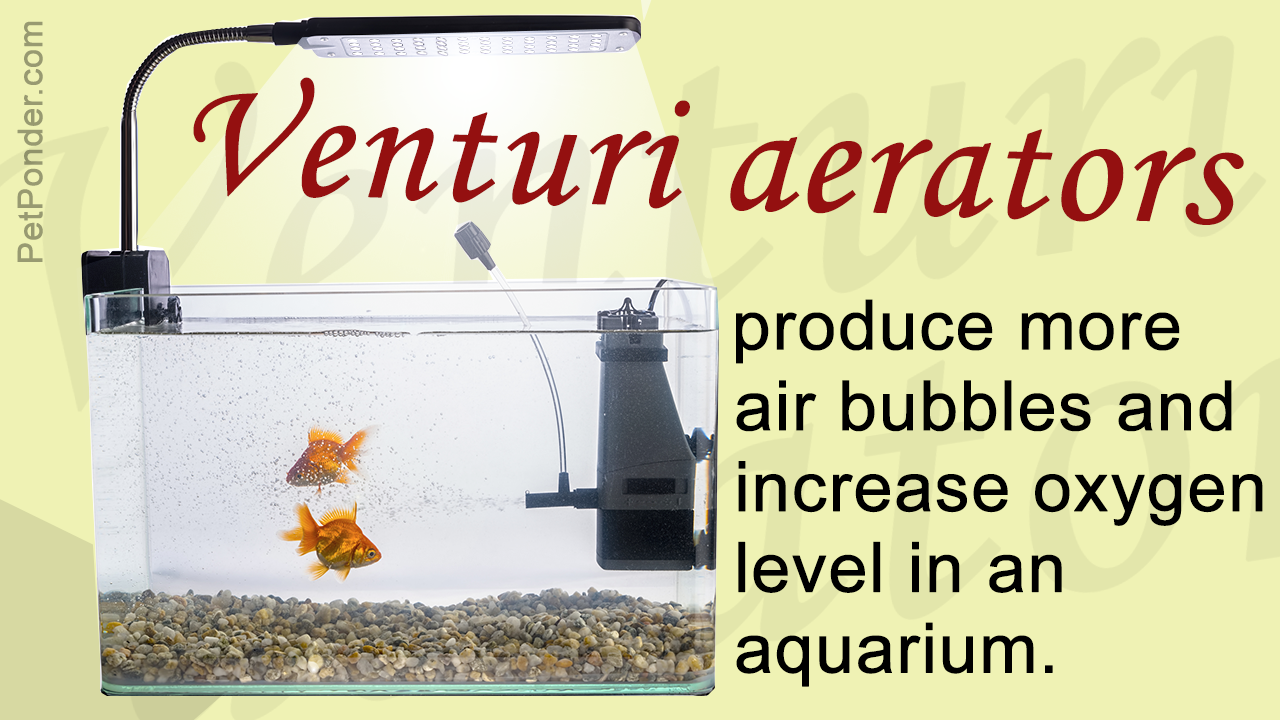
Aquarium water needs aeration for proper circulation of compounds as well as food material present in the water. While looking for aeration techniques it is important to consider the gentleness in the direction of water flow, temperature of water and the amount and size of air bubbles.
For survival of the fish, oxygenation of water in which they dwell is extremely important. When these aquatic animals live in oceans, ponds, rivers and lakes there is natural oxygenation of water because of the larger surface area. Water and air exchange gases at the surface level. Oxygen from air dissolves in water while carbon dioxide produced by respiration of the fish is released into the air. When the surface of water is disturbed, oxygenation is more. However in an aquarium, the surface is smaller than that of a river or an ocean. Hence, it is important to create frequent surface tension for better exchange of gases and ultimately for the survival of the species.
Various Aeration Systems
There are several techniques which you can use to provide a healthy pond to your pet fish, including use of airstones, air pumps, spray bar aerators, venturi aerators, etc.
Airstones and Air Pumps
This is the most inexpensive and commonly used method of aerating your aquarium. Airstones are connected to air pumps to produce bubbles. There is a common misconception that the bubbles provide oxygen to the fish, however, it’s the disturbance that is created by the bubbles at the surface that enhances the exchange of gases. Some people feel that the air pumps are too noisy and prefer using only airstones. However if the air pump is placed on a large sponge, it will lower the noise to a great extent. When it comes to the placement of the air pump, it should always be placed above the level of the aquarium so that the water does not drain back into the pump and damage it at the time of power failure. The size of an air pump is also a matter of concern while purchasing one for your aquarium, as there is a lot of variety in the sizes of air pumps.
Spray Bar Aerators
Spray bar aerators throw small streams of water to the surface forming air bubbles. When these bubbles burst, the surface tension of the water gets disturbed. Hence, the exchange of oxygen and carbon dioxide gas takes place. The bubbles produced by these spray aerators are larger than those produced by airstones.
Venturi Aerators
These aerators come in two types, floating aerators and bottom aerators with suction cups. These aerators have the capacity to produce large amounts of smaller air bubbles which produces more oxygen for the fish.
Powerheads
These devices are placed inside the tank on the side, connected to an air hose. With an inbuilt electric pump-action, the powerheads draw the bottom layer of water and send it to the top with great force for the process of aeration.
Steps to Install an Aeration System
Requirements:
- Transparent Plastic Tubing
- Air Pump
- Accessories (suction cups, connectors, valves, and clamps)
Steps:
- Decide the location of the air pump and the direction of pumped air, i.e., how it will go to the airstones.
- Once it is determined, measure the distance from the air pump to the air stones and cut the plastic tubing accordingly.
- Attach the accessories to the tubing following the intended layout of your aeration system.
- Now attach the ends of the tubing to the airstones. The capacity of the pump will determine how many airstones can be attached to the pump. It is better to have a shorter tubing with minimum aeration devices (airstones) because longer tubing and several aeration devices hamper the air pressure.
- Connect the air pump to the electrical outlet and turn the power on. Adjust the airflow as required, with the help of valves and connectors.
Combination of Aquarium Filters and Aeration Devices
Aquarium filtration is as important as aeration. A filter attracts all the debris and dirt produced in the aquarium and cleans the water by giving it constant movement. If you are planning to aerate your tank why not do it in combination with filtration. It will enhance overall maintenance of the aquarium.
There are three types of aquarium filters, corner filters that are placed inside the tank and are filled with activated charcoal and aquarium floss, under gravel filters that use the gravel (pebbles and rock fragments) as a substance for filtering debris, and mechanical or biological filters that hang on the back of the aquarium wall, containing a sponge, activated charcoal and small stones to clean the water. As far as combination is concerned, corner filters and airstones or air bars can be a good option for small tanks. For medium or large tanks, mechanical or biological filters with powerheads will be a better combination.
Advantages of Aerating Aquarium Water
- First and foremost benefit of aerating aquarium water is increase in the oxygen level that contributes to the survival of the fish.
- Secondly, production of toxic gases from biological wastes is reduced by aeration which creates a clean and healthy environment for the fish.
- Another advantage of aeration is, it helps to adjust the temperature and oxygen concentration of the aquarium. When the temperature of the tank increases, the amount of oxygen in it decreases which is harmful for the fish. At such times, by using aeration devices suggested below, you can provide enough oxygen to your fish.
So, choose a suitable combination of filter and aeration device and provide a healthy atmosphere to your aquatic pets to live in. Apart from contributing to the process of oxygenation, aeration devices also offer a beautiful look to your aquarium. Many people use live plants for oxygenation which is a very good option. Plants provide oxygen to the fish naturally and offer a refreshing green look to your aquarium.


